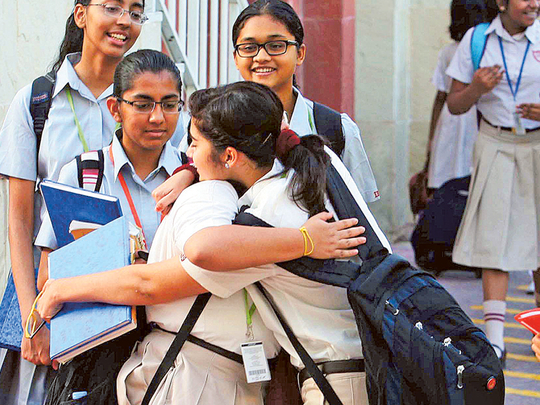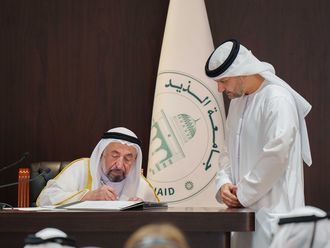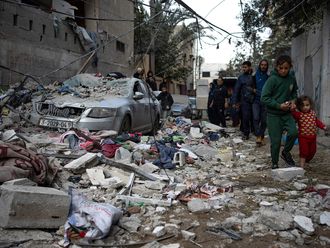
Dubai: Despite showing no improvement in inspections since 2013, Indian schools in Dubai will still be allowed to increase their fees by a minimum of 2.92 per cent and a maximum of 5.48 per cent in the next academic year.
The Knowledge and Human Development Authority (KHDA) inspections conducted on 25 Indian schools in Dubai found that only one school had improved from ‘acceptable’ to ‘good’ (JSS Private School) and another declined from ‘Good’ to ‘acceptable’ (GEMS Our Own Indian School), making the performance of Indian schools static.
“The overall judgements are unchanged since 2013, with exactly the same number of schools in each performance category,” the KHDA report read.
Despite the results remaining static, 15 schools will be able to increase their fees by 2.92 per cent. Of these, 13 schools (30,903 students) have been ranked ‘Acceptable’ since 2013 and two schools (4,566 students), ranked ‘Unsatisfactory’.
This is mainly because the KHDA follows a fee structure that allows schools to increase their fees annually based on their performance in school inspections and the percentage of the increase is based on the Education Cost Index (ECI).
The ECI is determined by Dubai Statistic Centre’s calculations, which have risen this year from 1.74 per cent to 2.92 per cent.
This means that schools rated ‘outstanding’ can increase their fees by 5.84 per cent (double the ECI), schools rated ‘good’ can increase their fees by 4.38 per cent (one and a half times the ECI), while schools rated acceptable or unacceptable can increase their fees by 2.92 per cent.
Out of the 25 schools inspected, the inspections, which were conducted by the Dubai Schools Inspection Bureau of the KHDA, rated two schools responsible for 9,635 students ‘outstanding’ (13 per cent). Eight schools responsible for 30,611 students (40 per cent) were rated ‘good’, 13 schools responsible for 30,903 students were rated acceptable and two schools responsible for 4,566 schools were rated ‘unsatisfactory’.
According to the KHDA, schools that have maintained their ratings have succeeded in meeting the new framework that is imposed annually and hence improved in performance despite showing no change in their overall ranking.
The report said that “during the sixth year of inspection of schools, 40 per cent of Indian schools were either ‘good’ or ‘outstanding’, and 60 per cent of Indian schools remained ‘acceptable’ or less.”
Areas of weakness
The findings found that of the 75,715 students in Indian schools, only 2,163 (2.9 per cent) were identified as having special educational needs (SEN).
The report said this is a low percentage of students identified with special educational needs as compared to the 7.5 per cent average taken from across 12 other countries.
Although no Indian schools were judged as having ‘Outstanding’ SEN provision, 38 per cent had ‘good’ provision but 17 per cent of schools had ‘unsatisfactory’ provision.
The report read: “The most successful schools had highly skilled and professionally qualified specialist staff that held senior leadership positions. They were responsible for training and developing teachers and ensuring that students received appropriate support.”
It also said effective teachers successfully adapted lesson plans to take into account students’ individual learning needs, and good quality support was often provided to help students during lessons.
Areas of strength
The inspections found that there is an improvement in children’s attainment in English, mathematics and science in the early years (kindergarten or foundation) of Indian schools.
The quality of the early years curriculum in Indian schools in Dubai was judged as good or better in 64 per cent of the schools (there are 14,947 children, 19.8 per cent, educated in the early years phase).
It also found that 58 per cent of early years teaching in Indian schools in Dubai was good or better.
This improved outcome for young children when it comes to children’s personal responsibility, quality of teaching and design and quality of curriculum.
The report read: “The most successful Indian curriculum schools had introduced and used other international Early Years curricula to enrich children’s learning experiences. They had invested significantly in improving the quality of the learning environment and provided resources for children that promoted learning and development through play.”












